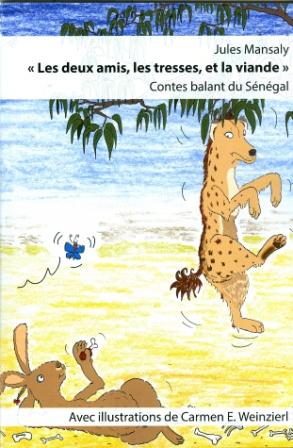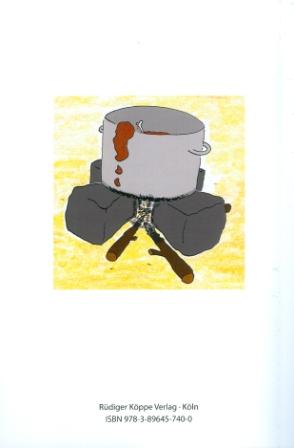

« Les deux amis, les tresses, et la viande » – Contes balant du Sénégal
Avec des illustrations de Carmen E. Weinzierl
Author: Jules Mansaly. With drawings by: Carmen E. Weinzierl. Series edited by: Wilhelm J.G. Möhlig †.
Series: WK Verbal Art and Documentary Literature in African Languages Volume 40
202074 pp.
39 drawings by Carmen E. Weinzierl
Text language(s): French
Format: 160 x 240 mm
170 g
Paperback
€ 29.80
Buy '« Les deux amis, les tresses, et la viande » – Contes balant du Sénégal' as a downloadable PDF document directly from our online shop »
Order '« Les deux amis, les tresses, et la viande » – Contes balant du Sénégal' as print edition »
The Balanta people in Senegal with about 96,700 speakers (2014) reflect their cultural ideologies and world of thoughts through numerous proverbs and stories. Unfortunately, their oral literature is threatened of extinction by urbanisation, school systems and modernisation. Instead written literature is used by the Balanta more and more.
The editor accentuates the fact that every literary work was once derived from a thought and oral literature and passed on through generations. Therefore, oral traditions that existed before the printed word should be valued as such and are not inferior nor limited to literary works such as Homeas. For that reason, oral traditions have their own laws that sometimes intersect or differentiate with written literature.
One of the author’s main questions is if he can translate the oral traditions of the Balanta into written text by honouring all the different aspects that withhold the traditions such as the storyteller’s expressions of words, facial expressions, eye and head movements, hand gestures, his humour, the use of rhythm and pauses in speech, onomatopoeias, as well as the reaction of the audience. All those important elements of the storytelling makes it its own art form and “l’art pour l’art”.
The oral traditions and proverbs paint a picture of the current situation of the Balanta, their society and social relations, by using symbolic realities. Villages, landscapes and animals are portrayed in the stories, the animals often have a human characteristic to imply a hidden moral or lesson to the viewer or use satire to transmit a critic of someone or something. According to Anne Storch (2011), the animals not only stand for one specific characteristic but also a specific one that is commonly known and linked to a specific group, clan or species of characteristics in humans. By transcribing the Balantas’ stories, Mansaly wants to save those educational oral traditions from extinction for future generations.
The stories are visually supported by lovely drawings by the Cologne artist Carmen E. Weinzierl.
Review by Sigrid Schmidt in Afrikanistik-Ägyptologie-Online 2021
Under these links you will find publications by the author and descriptions of further (West) Atlantic languages and cultures:
Accompanying material:
- Dictionnaire des proverbes balant
(ISBN 978-3-89645-737-0 ) - Dictionnaire du balanta-ganja
(ISBN 978-3-89645-230-6 )
Cross-reference:
- L’expression du temps en wolof
(ISBN 978-3-89645-557-4 ) - Les classes nominales dans les langues atlantiques
(ISBN 978-3-89645-565-9 ) - Lifeworlds of Young Men beyond Migration and Immobility in Pikine, Senegal
(ISBN 978-3-89645-914-5 ) - Morphosyntaxe du jóola banjal
(ISBN 978-3-89645-548-2 ) - Temne Stories · Erzählungen der Temne · Mump me Themne
(ISBN 978-3-927620-76-6 ) - Vies quotidiennes à Dakar (Sénégal) / Everyday Life in Dakar (Senegal) / Nettaliy dundin ci Ndakaaru, bis bu nekk
(ISBN 978-3-89645-285-6 )
| « back | Print version | [top] |
 Books
Books Audio
Audio Biographies
Biographies Series
Series Festschrifts
Festschrifts Journals
Journals